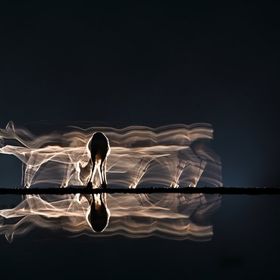The buzzard looks closely at the surroundings. Common buzzard (Buteo buteo) - animal in human care (falconry used).
The buzzard looks closely at the surroundings. Common buzzard (Buteo buteo) - animal in human care (falconry used).
Read less
Read less
Views
450
Likes
Awards
Contest Finalist in Covers Photo Contest Volume8
Peer Award
Absolute Masterpiece
Superb Composition
Top Choice
Magnificent Capture
Outstanding Creativity
All Star
Superior Skill
Top Ranks
Categories
Same photographer See allBehind The Lens
Discover more photos See all
Behind The Lens
Location
I created this photo in the Czech Republic during private photo event with my good friends photographers. We took advantage of a unique opportunity to take a pictures of owls and birds of prey, that moved freely in the countryside in their natural environment. The scene was carefully selected to faithfully match the natural biotope of the buzzard. It was an unusual experience, I was a little moment in the presence of this majestic animals.Time
I remember good, it was the afternoon on 28 October 2017, was around 14:30 pm and was the autumn gloomy mood.Lighting
The sun did not shine, and the high, continuous cloud covered the whole country. But the light was enough. It was good for the photo. They did not form a contrasting shadows.Equipment
At that time I worked with my favourite digital camera Nikon D5 and with my new excellent fast lens Nikkor 400 f/2,8. I have stabilized this kit on a carbon tripod Really Right Stuff TVC-32G Versa, thanks to him I could be very very low over the dry vegetation, right in the frog position.Inspiration
I love nature and especially wild animals, birds, reptiles and insects. But I'm very busy at work, now I can not take part in a time-consuming expedition or wait in nature for a good opportunity. That's why I'm looking for the opportunity to photograph wild animals in human care. Animal rescue stations provide a lot of opportunities to photograph animals with disabilities that can not return to nature. That's why I took advantage of the unique possibility of assisted photography of birds of prey and owls, which are tame, well tolerant of human presence, and represent little risk to the photographer.Editing
I love natural photos. Realistic shots without big adjustments. I try to capture all my photos so I do not have to use the massive post-processing. I know it is very modern and trendy today, but I do not work with PS or LR or other editing software. I invoke my NEF only in original Nikon Capture and make only minor edits. Maybe my photos could be even more attractive, but I want to show real reality.In my camera bag
The contents of my robust Tamrac bag is primarily a powerful digital camera that I can rely on in every weather. Now I'm normally using the body Nikon D5 and the backup body Nikon D850. I normally wear Nikkor lenses 24-70 f/2.8 and 70-200 f/2.8. These "workers" have always been with me. On the "macro" action I take the excellent old micro lens Nikkor 200 f/4 or micro lens 105 f/2,8. For animals and birds photography I need to pack "heavier weight" - I'm using the lens Nikkor 400 f/2.8 and now also a new zoom lens Nikkor 180-400 f/4. The last one year I test the new mirrorless Nikon Z7 with my fast lenses.Feedback
When it comes to photographing the endangered animal species, I recommend the form of "assisted photography". It's about photographing a species of wild animal that is in human care. The animal is tame, working well with it, and it is especially safe for humans. Most importantly, the photographer does not disturb wild animals in their natural biotope. Today there is a trend commercial group photographic expeditions to exotic countries. From the yield is funded the rescue of endangered animal species. But too frequent visits of groups of people in animal biotopes are very disturbing and stressful for endangered animals and their food chain. These expeditions can become very destructive for small animal populations and, instead of rescuing animals, can speed their extinction. We all photographers have to think, whether our money really helps those animals.














































